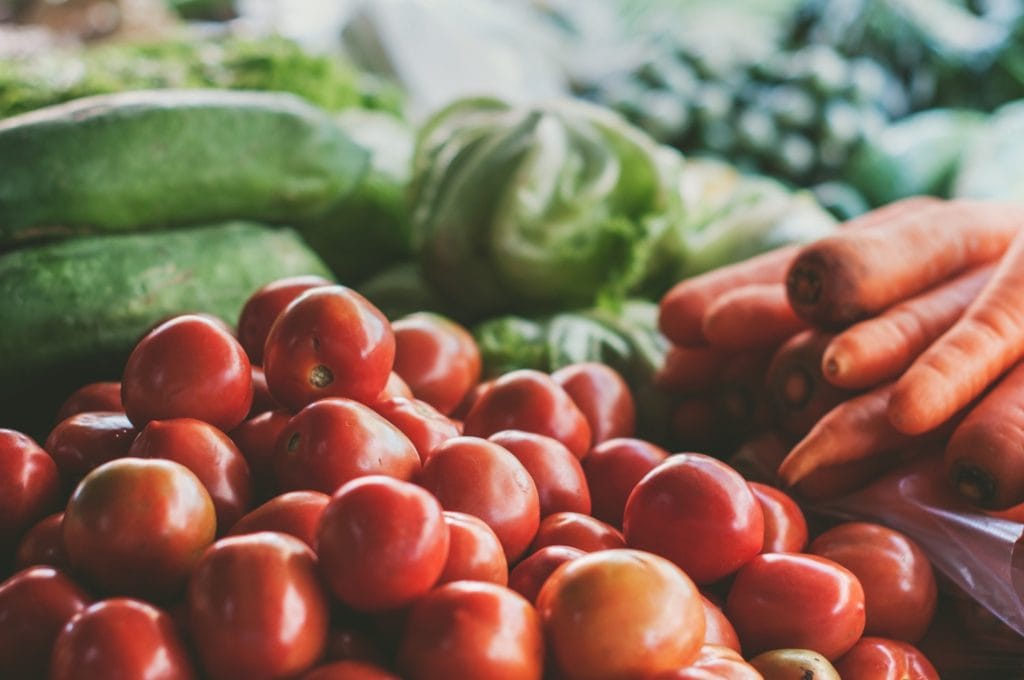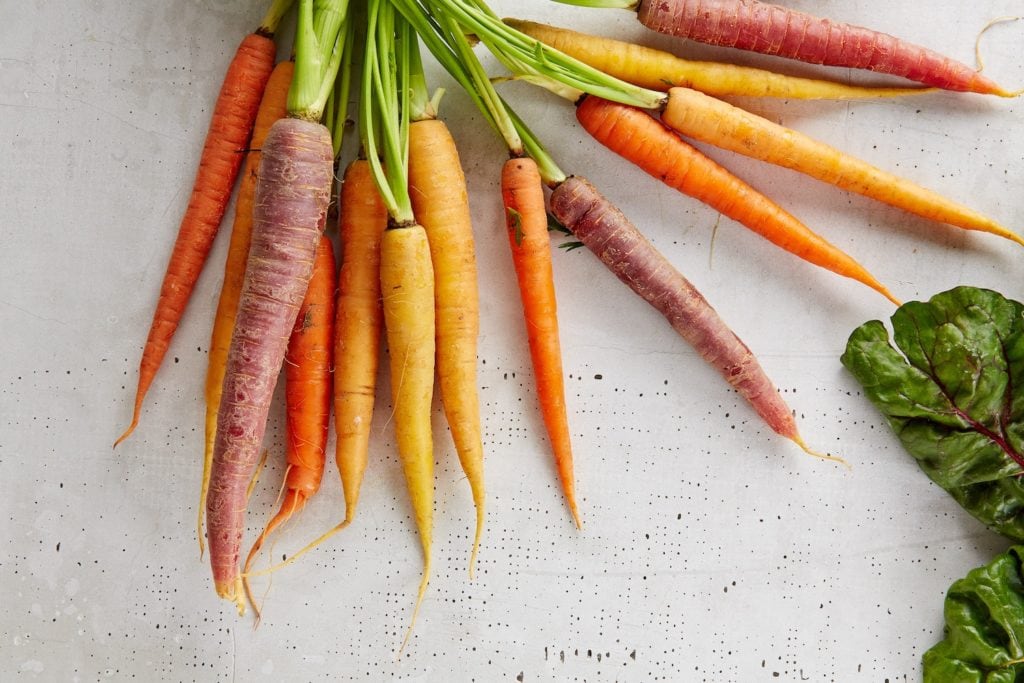Last updated on September 26th, 2023 at 10:51 am
Learn more about a plant-based diet, what it means and whether or not it’s good for athletes. And get RD-approved practical tips on how to start a plant-based diet today.
“Plant-based” eating is one of the hottest trends in the nutrition world right now. Between plant-based burgers that taste like meat, celebrities and athletes promoting plant-based eating and fast food chains advertising plant-based options, the term is truly everywhere.

Chances are that you’ve found this page because you’re looking for more info on whether or not you should try a plant-based diet, and you’re in luck. As a plant-based Sports Dietitian, I’m breaking down everything you need to know about eating more plants!
What is a plant-based diet?
Plant-based diets are on the rise, especially as more elite and professional athletes flaunt the benefits of eating plants. But the exact definition of a plant-based diet isn’t set in stone and can vary based on who you ask.
Many people wonder if plant-based and vegan are the same things. Does a plant-based diet include only plants or is it more lenient? If you eat predominantly plants with soy dairy, eggs or even poultry, seafood and meat are thrown in, does that constitute a plant-based diet?
The answer is that it depends on who you ask! There is no one definition of the term plant-based, so how you define it is up for interpretation.
In my opinion, a plant-based diet consists of mostly whole foods that are predominantly plants. I follow a plant-based diet that is a vegetarian diet, which consists mostly of plants with some dairy and eggs.
Similarly, U.S. News & World Report describes plant-based diets “as an approach that emphasizes minimally processed foods from plants, with modest amounts of fish, lean meat and low-fat dairy, and red meat only sparingly”. Others might argue that plant-based means a strictly vegan diet.
The true definition of the term ‘plant-based’ is up to you, but what’s not up for debate is the emphasis on, well, plants!
Benefits of plant-based diet for athletes

Plant-based diets have been well studied for their role in disease prevention. Since plant-based diets are rich in whole foods, like fruits, vegetables, beans, legumes, nuts, soy, seeds and whole grains, they contain plenty of beneficial nutrients, such as vitamins, minerals, fiber and antioxidants.
This combination of foods has been researched in various disease conditions, and the results are overwhelmingly positive. So much so that many nonprofit and government agencies are singing the praises of plant-based eating.
The American Institute for Cancer Research suggests that Americans consume two-thirds of their dietary intake from vegetables, fruits, whole grains, and beans. In the 2015-2020 Dietary Guidelines for Americans, vegetarian diets are recommended as one of three healthful dietary patterns.
And it’s important to note that plant-based diets are low in processed foods, which means they may be associated with weight loss. In one study, the average BMI was highest (28.8) in meat eaters and lowest in vegans (23.6).
Vegetarian diets also improve several heart disease risk factors, including abdominal obesity, blood pressure, blood lipids and blood glucose. What’s more, for those who suffer from risk factors for heart disease, such as high cholesterol, a vegetarian diet may reduce cholesterol levels and improve heart health without the use of cholesterol-lowering drugs.
This eating pattern also decreases markers of inflammation and protects from plaque formation in the arteries. Consequently, vegetarians have a reduced risk of developing and dying from heart disease. Researchers attribute these benefits to the abundance of fiber and scarcity of saturated fat in vegetarian and vegan diets.
Lastly, compared with meat eaters, vegetarians and vegans have a lower risk of developing type 2 diabetes and cancer, especially gastrointestinal cancer. Furthermore, a vegan diet appears to offer greater protection against overall cancer incidence than any other style of eating.
As far as athletes are concerned, plant-based eating has been shown to be beneficial. In one study, researchers compared 76 recreational runners—24 vegan, 26 vegetarian, and 26 who ate meat—to determine their max exercise capacity. {Related: The Ultimate Guide To Feeding Vegan Athletes}
The researchers found that all of the athletes consumed about the same amount of calories and protein per day. But the vegan runners ate more carbs, fiber, magnesium, iron, folate, and vitamin E than those who were vegetarians or meat-eaters.
All of the athletes performed similarly on the exercise test, proving that one diet did not provide a significant advantage over another one. That said, there is no denying that plants are an important part of a healthy diet.

I truly believe that the key to exercise performance is adhering to sports nutrition principles and eating a well-balanced diet with nourishing foods.
For more info on what vegetarian and vegan diet for athletes, check out The No-Brainer Nutrition Guide For Runners.
How to try a plant-based diet
1. Create your own definition of plant-based eating
As I said earlier, the term “plant-based” isn’t truly defined. For some, it means eating plenty of plants with meat. For others, it’s a vegetarian diet that includes plants, dairy, eggs and sometimes fish. Some consider plant-based to be a strictly vegan diet that is made up of just plants.
The best part is that it’s up to you to decide how you will eat more plants. Choose a goal that seems attainable and realistic. For example, maybe you will incorporate plants into every single meal of the day. Or you will only eat meat at once per day. Or maybe you’re mostly vegetarian now and you have decided to omit the meat entirely.

Find an option that works for you and write down the version of plant-based that you will follow. It may change over time, and that’s perfectly okay. But take note of your starting place.
2. Commit to at least 21 days of your new lifestyle
They say it takes 21 days to create a habit, and I’ve found this window to be true with my clients. Know that it will be really difficult at first, but it will get easier over time.

Now that you’ve defined your version of plant-based eating, it’s time to implement that change for at least 21 days. If you can’t do it for this period of time, you may have been a bit too ambitious with your initial goal. Don’t beat yourself up–reassess, create a more attainable goal and try again.
If you can do it for 21 days, chances are that you’ll stick with it for the long haul.
3. Choose whole foods
The terms “plant-based” and “whole foods” go hand-in-hand. Whole foods are foods that aren’t processed and are free contain any additives.
All fruits and vegetables are considered whole foods. Canned beans, dried legumes, frozen vegetables, dried fruit, dried grains, roasted nuts, oils, yogurt, tofu or nut butter are also whole foods, although they had to go through very minimal processing for packaging.

In addition to eating more whole foods, cut back on processed foods, like chips and snacks, sugary desserts, cookies, donuts, pastries, and drinks, fatty meats and fried foods. It’s perfectly fine to eat these foods every once in a while, but they shouldn’t be part of your daily diet.
4. Assess hunger and energy levels
I receive many many emails from readers who have recently cut meat out of their diet and are constantly hungry or fatigued. There are a few reasons this might happen when switching to a plant-based diet, such as:
- You may be missing out on the nutrients that are abundant in meat, like protein, iron and fat. Protein and fat keep you full and iron is necessary for maintaining energy levels.
- You may be eating fewer calories than you were on a meat-centric diet. Meat has more calories than plant-based proteins.
- You may not be recovering properly after a workout. This goes back to not eating enough protein.
If you aren’t sure if you’re falling victim to any of these scenarios, keep reading to get info on all of these common plant-based eating pitfalls.
5. Learn more about plant-based nutrition
The bottom line is that if you want to try a plant-based diet in any capacity, the best way to do it is to eat plenty of nutritious whole foods. To help you do so, check out these helpful resources to make sure you don’t miss out on any key nutrients.
- The Ultimate Guide For Vegan Athletes
- 5 Vegan Sources of Vitamin B12
- 12 Plant-Based Sources of Iron
- How To Build Muscle On A Vegetarian Diet
Or sign up to join the 4-Week Plant-Based Athlete Roadmap!


0 Comments